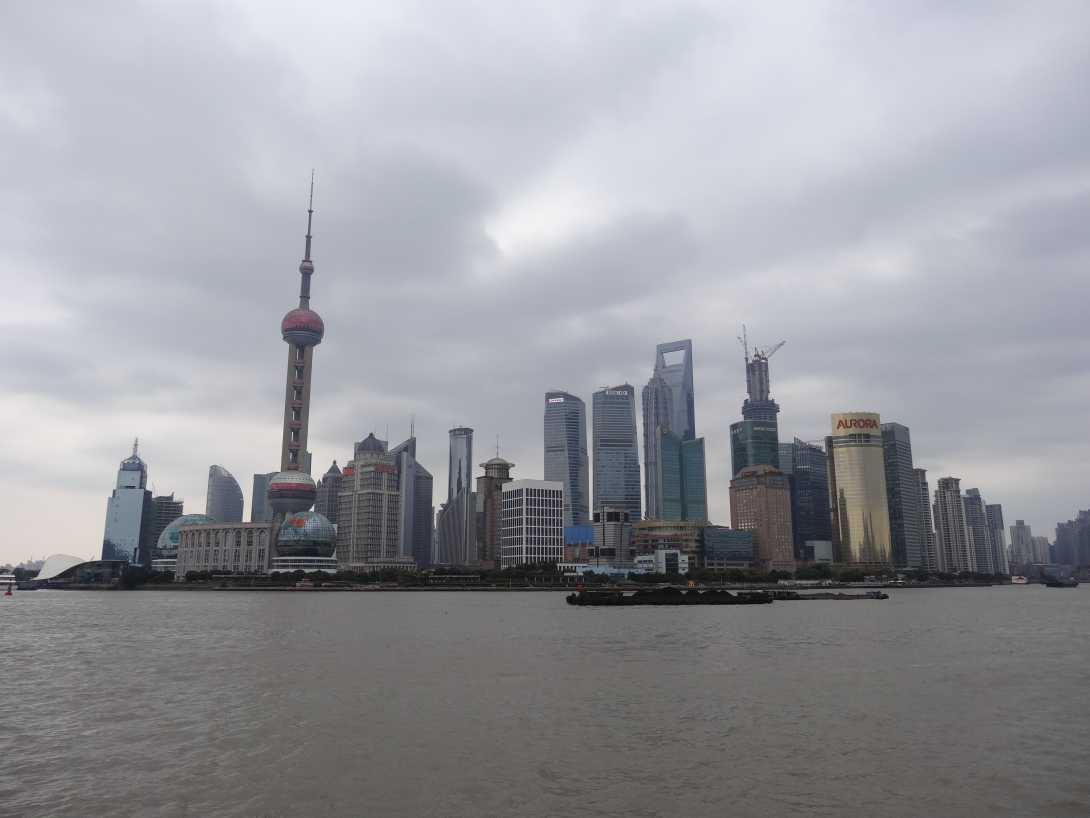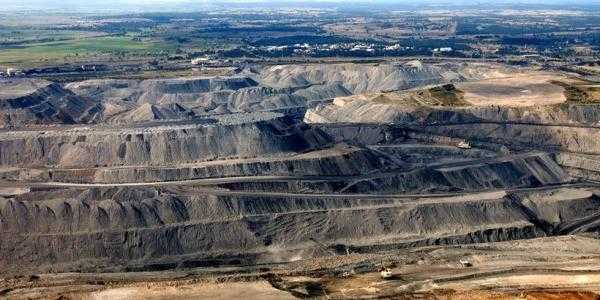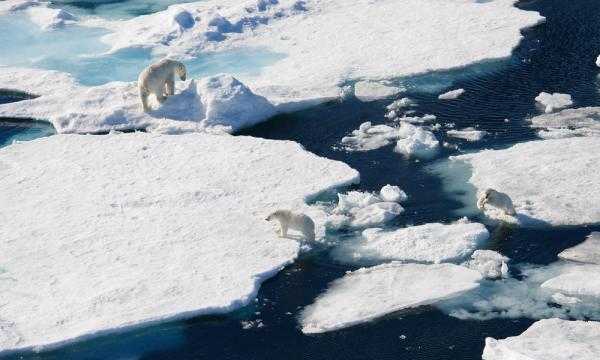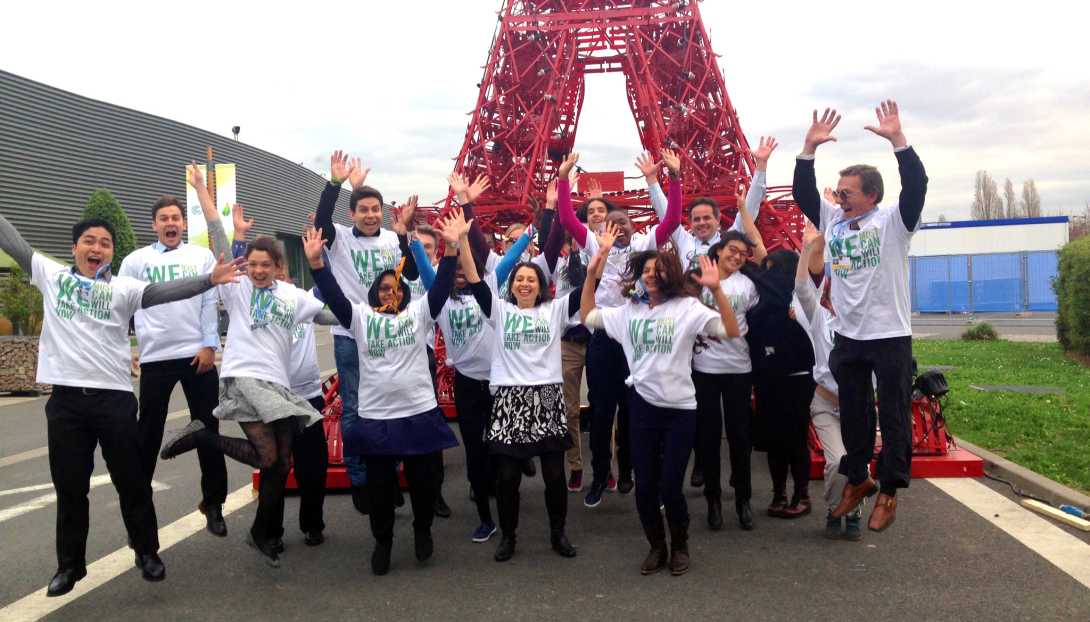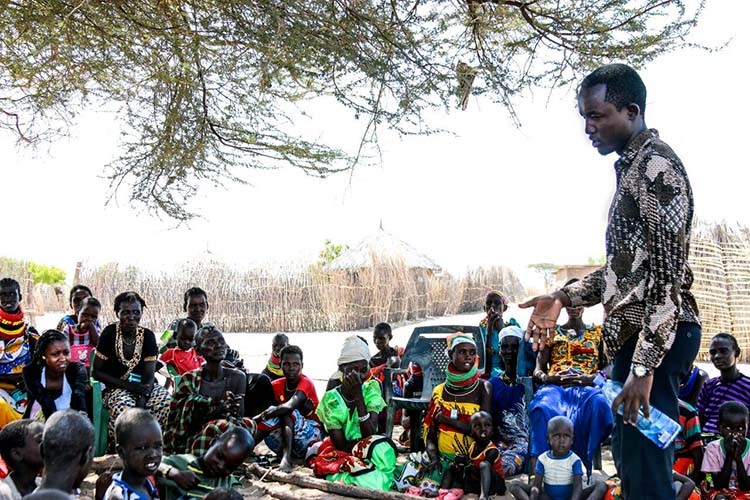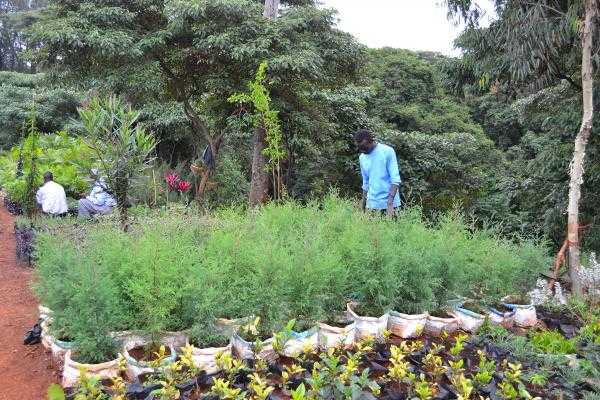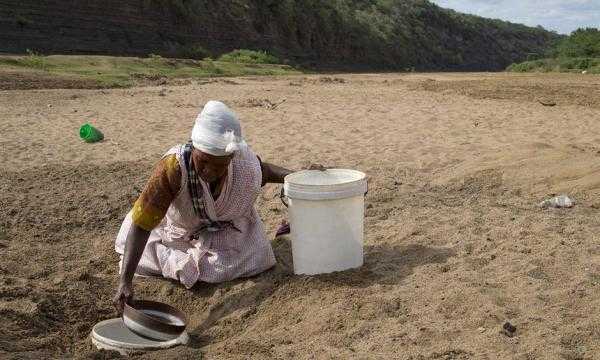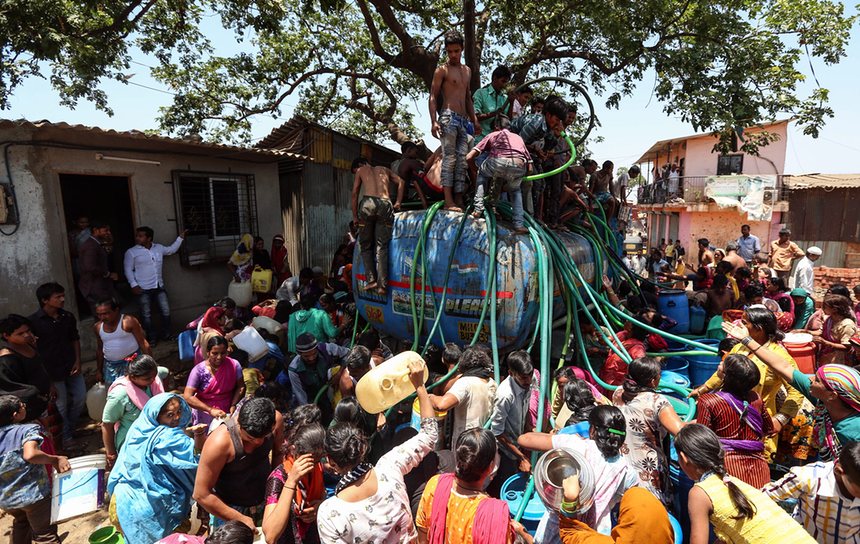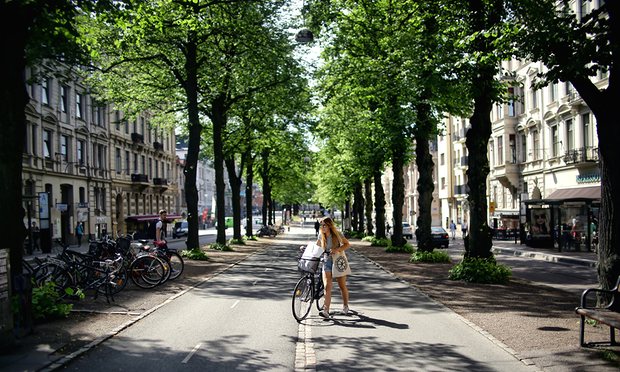
[video: https://vimeo.com/188252140]
<h3><img alt="" src="/sites/default/files/images/paris.jpg" style="width: 1000px; height: 299px;" /><br />
<strong style="font-size: 13.008px; line-height: 20.0063px;">OPINION</strong><span style="font-size: 13.008px; line-height: 20.0063px;"> </span><br />
It has been a really unprecedented year for global climate action</h3>
<p>From the Paris agreement to a new deal on another kind of greenhouse gas, the world is doing a lot to slow climate change. <a href="http://connect4climate.org/article/it-has-been-really-unprecedented-yea…; target="_blank">READ MORE</a></p>
<p> </p>
<h3><img alt="" src="/sites/default/files/images/13.png" style="width: 1000px; height: 259px;" /><br />
<strong style="font-size: 13.008px; line-height: 20.0063px;">INFORMATIVE</strong><br />
13 SDG: Climate Action</h3>
<p>Take urgent action to combat climate change and its impacts. <a href="http://connect4climate.org/article/13-sdg-climate-action" target="_blank">READ MORE</a></p>
<p><br />
</p>
<h3><br />
<br />
<img alt="" src="/sites/default/files/images/16.png" style="width: 1000px; height: 243px;" /></h3>
<h3 style="line-height: 20.0063px;"><strong style="font-size: 13.008px; line-height: 20.0063px;">CLIMATE TOOL</strong><br />
The Climate Tracker</h3>
<p><span style="font-size: 13.008px; line-height: 20.0063px;">The "Climate Action Tracker" is an independent science-based assessment, which tracks the emission commitments and actions of countries. </span><a href="http://connect4climate.org/article/climate-action-tracker" style="font-size: 13.008px; line-height: 20.0063px;" target="_blank">READ MORE</a></p>
<p> </p>
<h3><img alt="" src="/sites/default/files/images/F12_ClimateAction_.png" style="width: 1000px; height: 179px;" /><br />
<strong style="font-size: 13.008px; line-height: 20.0063px;">VIDEO</strong><br />
#Film4Climate Global Climate Action trailer</h3>
<p><a href="https://www.connect4climate.org/video/film4climate-global-climate-actio…; target="_blank">WATCH IT</a></p>
<p> </p>
<h3><img alt="" src="/sites/default/files/images/5646.jpg" style="width: 1000px; height: 300px;" /><br />
<strong style="font-size: 13.008px; line-height: 20.0063px;">ARTICLE</strong><br />
The importance of urban forests: why money really does grow on trees</h3>
<p>Mature trees clean air, lower stress, boost happiness, reduce flood risk – and even save municipal money. So why are they cut down when cities develop – and how should the UN’s new urban agenda protect them? <a href="http://connect4climate.org/article/importance-urban-forests-why-money-r…; target="_blank">READ MORE</a><br />
</p>
<h3><br />
<img alt="" src="/sites/default/files/images/Kamilia_Safi_.JPG" style="width: 1000px; height: 288px;" /><br />
<strong style="font-size: 13.008px; line-height: 20.0063px;">INFOGRAPHIC</strong><br />
Forests Provide Vital Resources to 1.3B people</h3>
<p><a href="http://connect4climate.org/infographics/forests-provide-vital-resources…; target="_blank">CHECK IT</a></p>
<p> </p>
<h3><img alt="" src="/sites/default/files/images/F6_Forests_.png" style="width: 1000px; height: 158px;" /><br />
<strong style="font-size: 13.008px; line-height: 20.0063px;">VIDEO</strong><br />
#Film4Climate Forests trailer</h3>
<p><a href="https://www.connect4climate.org/video/film4climate-forests-trailer" target="_blank">WATCH IT</a></p>
<p> </p>
<h3><img alt="" src="/sites/default/files/images/_BZJDF.png" style="width: 1000px; height: 191px;" /><br />
<strong style="font-size: 13.008px; line-height: 20.0063px;">ARTICLE</strong><br />
How can we better value water as global shortages start to threaten economies?</h3>
<p>With water shortages exacerbating inequalities and causing damage to economies, making sure the commodity is properly valued by all is essential. <a href="http://connect4climate.org/article/how-can-we-better-value-water-global…; target="_blank">READ MORE</a></p>
<p> </p>
<h3><br />
<br />
<img alt="" src="/sites/default/files/images/Drought_%20by%20Sebri%20Wafa-16x9.jpg" style="width: 1000px; height: 237px;" /><br />
<strong style="font-size: 13.008px; line-height: 20.0063px;">REPORT</strong><br />
High and Dry: Climate Change, Water, and the Economy</h3>
<p>A new World Bank reports finds that water scarcity, exacerbated by climate change, could hinder economic growth, spur migration, and spark conflict. <a href="http://connect4climate.org/article/high-and-dry-climate-change-water-an…; target="_blank">READ MORE</a></p>
<h3> </h3>
<h3> </h3>
<h3><img alt="" src="/sites/default/files/images/1617.jpg" style="width: 1000px; height: 280px;" /><br />
<strong style="font-size: 13.008px; line-height: 20.0063px;">INFOGRAPHIC</strong><br />
Why Waste Water</h3>
<p>Extreme weather, including droughts and floods, will mean more uncertain water supply. <a href="https://www.connect4climate.org/infographics/why-waste-water#" target="_blank">CHECK IT</a></p>
<p> </p>
<h3><img alt="" src="/sites/default/files/images/F15_Water_.png" style="width: 1000px; height: 224px;" /><br />
<strong style="font-size: 13.008px; line-height: 20.0063px;">VIDEO</strong><br />
#Film4Climate Water Trailer</h3>
<p><a href="https://www.connect4climate.org/video/film4climate-water-trailer" target="_blank">WATCH IT</a></p>
<p> </p>
<h3><img alt="" src="/sites/default/files/images/bt-terrace%20farm%20fields%20and%20homes-1024x690.jpg" style="width: 1000px; height: 230px;" /><br />
<strong style="font-size: 13.008px; line-height: 20.0063px;">BLOG POST</strong><br />
Foster Climate-Smart Agriculture</h3>
<p>A growing global population and changing diets are driving up the demand for food. <a href="http://connect4climate.org/article/foster-climate-smart-agriculture" target="_blank">READ MORE</a>.</p>
<p> </p>
<h3><img alt="" src="/sites/default/files/images/women_farmers_0.jpg" style="width: 1000px; height: 269px;" /><br />
<strong style="font-size: 13.008px; line-height: 20.0063px;">BLOG POST</strong><br />
Advancing women’s land and resource rights</h3>
<p>Development practitioners know secure land rights for women are important for the well-being of rural families, whether a woman is head of her household or lives in a household headed by a man. <a href="http://connect4climate.org/article/advancing-women%E2%80%99s-land-and-r…; target="_blank">READ MORE</a></p>
<p><br />
</p>
<h3><img alt="" src="/sites/default/files/images/10-17-2016Greenhouse.jpg" style="width: 1000px; height: 246px;" /><br />
<strong style="font-size: 13.008px; line-height: 20.0063px;">REPORT</strong><br />
Agriculture must adopt climate-smart practices to better help poverty reduction</h3>
<p>The rapid transformation of farming and food systems to cope with a warmer world, such as adopting climate-smart practices, particularly to curb greenhouse gas emissions, is critical for hunger and poverty reduction, the United Nations agriculture agency said today in a new report. <a href="http://connect4climate.org/article/agriculture-must-adopt-climate-smart…; target="_blank">READ MORE</a></p>
<p> </p>
<h3><img alt="" src="/sites/default/files/images/elijah_mumo_-_a_farmer_tills_his_land_so_as_to_plant_drought_resistant_crops.jpg" style="width: 1000px; height: 233px;" /><br />
<strong style="font-size: 13.008px; line-height: 20.0063px;">INFOGRAPHIC</strong><br />
Livestock diversity helps cope with climate change</h3>
<p>Livestock diversity or animal genetic resources are terms used to describe the pool of 38 species of domesticated birds and mammals with more than 8 800 breeds currently used for food and agriculture. <a href="http://connect4climate.org/infographics/livestock-diversity-helps-cope-…; target="_blank">CHECK IT</a></p>
<p> </p>
<h3><img alt="" src="/sites/default/files/images/F1_agriculture.png" style="width: 1000px; height: 223px;" /><br />
<strong style="font-size: 13.008px; line-height: 20.0063px;">VIDEO</strong><br />
#Film4Climate Agriculture trailer</h3>
<p><a href="https://www.connect4climate.org/video/film4climate-agriculture-trailer&…; target="_blank">WATCH IT</a></p>
<p> </p>
<h3><img alt="" src="/sites/default/files/images/3000.jpg" style="width: 1000px; height: 217px;" /><br />
<span style="font-size: 13.008px; line-height: 20.0063px;">OPINION</span><br />
Two billion more people will live in cities by 2035. This could be good – or very bad</h3>
<p>Cities are like magnets. Without a better model for growth, people will still come – but they will live in awful conditions. <a href="http://connect4climate.org/article/two-billion-more-people-will-live-ci…; target="_blank">READ MORE</a></p>
<p> </p>
<h3><img alt="" src="/sites/default/files/images/89.jpg" style="width: 1000px; height: 216px;" /><br />
<strong style="font-size: 13.008px; line-height: 20.0063px;">REPORT</strong><br />
How Can We Finance the Resilient Cities of the Future?</h3>
<p>By 2030, without significant investment to improve the resilience of cities around the world, climate change may push up to 77 million urban residents into poverty. <a href="http://connect4climate.org/article/how-can-we-finance-resilient-cities-…; target="_blank">READ MORE</a></p>
<p> </p>
<h3><img alt="" src="/sites/default/files/images/cITIES_158.png" style="width: 1000px; height: 211px;" /><br />
<strong style="font-size: 13.008px; line-height: 20.0063px;">INFOGRAPHIC</strong><br />
Transit oriented development with land values</h3>
<p><a href="http://connect4climate.org/infographics/transit-oriented-development-la…; target="_blank">CHECK IT</a></p>
<p> </p>
<h3><img alt="" src="/sites/default/files/images/F2_cities_.png" style="width: 1000px; height: 172px;" /><br />
<strong style="font-size: 13.008px; line-height: 20.0063px;">VIDEO</strong><br />
#Film4Climate Cities And Mobility trailer</h3>
<p><a href="https://www.connect4climate.org/video/film4climate-cities-and-mobility-…; target="_blank">WATCH IT</a></p>
<h3><img alt="" src="/sites/default/files/images/980x.jpg" style="width: 1000px; height: 285px;" /><br />
<strong style="font-size: 13.008px; line-height: 20.0063px;">OPINION</strong><br />
Young People Hold the Key to Mobilizing Climate Action</h3>
<p>As I look toward our planet’s future, I reflect on numerous examples from our past, in which young generations not only helped lead, but also provided the main spark that forced older decision-makers to push through change. <a href="http://connect4climate.org/article/young-people-hold-key-mobilizing-cli…; target="_blank">READ MORE</a></p>
<p> </p>
<h3><img alt="" src="/sites/default/files/images/DGHSD.jpg" style="width: 1000px; height: 204px;" /><br />
<strong style="font-size: 13.008px; line-height: 20.0063px;">INITIATIVE</strong><br />
Youth4Climate</h3>
<p>This initiative celebrates the power of youth. <a href="https://www.connect4climate.org/initiatives/youth4climate" target="_blank">READ MORE</a></p>
<p> </p>
<h3><img alt="" src="/sites/default/files/images/artigo3.png" style="width: 1000px; height: 220px;" /><br />
<strong style="font-size: 13.008px; line-height: 20.0063px;">OPINION</strong><br />
COP22: Are you listening to our voices?</h3>
<p>Collective efforts for far-reaching changes (climate change) are possible and realistic should politicians choose to listen to the voice of their young people. <a href="https://www.connect4climate.org/article/cop22-are-you-listening-our-voi…; target="_blank">READ MORE</a></p>
<p> </p>
<h3><img alt="" src="/sites/default/files/images/F13_Young_.png" style="width: 1000px; height: 263px;" /><br />
<strong style="font-size: 13.008px; line-height: 20.0063px;">VIDEO</strong><br />
#Fim4Climate Young & Future Generation Trailer</h3>
<p><a href="https://www.connect4climate.org/video/fim4climate-young-future-generati…; target="_blank">WATCH IT</a></p>
<p> </p>
<h3><img alt="" src="/sites/default/files/images/energy.jpg" style="width: 1000px; height: 265px;" /><br />
<strong style="font-size: 13.008px; line-height: 20.0063px;">ARTICLE</strong><br />
Renewables made up half of net electricity capacity added last year</h3>
<p>Experts hail rapid transformation that will see clean energy outgrow fossil fuels in the next five years - but warn UK is failing to exploit huge potential. <a href="http://connect4climate.org/article/renewables-made-half-net-electricity…; target="_blank">READ MORE</a></p>
<p> </p>
<h3><img alt="" src="/sites/default/files/images/LUZ.jpg" style="width: 1000px; height: 231px;" /><br />
<strong style="font-size: 13.008px; line-height: 20.0063px;">REPORT</strong><br />
IEA raises its five-year renewable growth forecast as 2015 marks record year</h3>
<p>Renewables have surpassed coal last year to become the largest source of installed power capacity in the world. <a href="http://connect4climate.org/article/iea-raises-its-five-year-renewable-g…; target="_blank">READ MORE</a></p>
<p> </p>
<h3><img alt="" src="/sites/default/files/images/ALC.jpg" style="width: 1000px; height: 201px;" /><br />
<strong style="font-size: 13.008px; line-height: 20.0063px;">INFOGRAPHIC</strong><br />
Energy Outlook for 2040</h3>
<p>As the world tries to become more and more eco-friendly, we ask the question “What will energy production look like in 2040 and what is being done to make the world a greener place?" <a href="https://www.connect4climate.org/infographics/energy-outlook-2040" target="_blank">CHECK IT</a></p>
<p> </p>
<h3><img alt="" src="/sites/default/files/images/MOR2.jpg" style="width: 1000px; height: 175px;" /><br />
<strong style="font-size: 13.008px; line-height: 20.0063px;">MORROCO</strong><br />
Morocco Could See 100 Percent Green Energy Use by 2050</h3>
<p>Morocco could run on 100 percent green energy by the year 2050, according to new research on the matter from Stanford University. <a href="http://connect4climate.org/article/morocco-could-see-100-percent-green-…; target="_blank">READ MORE</a></p>
<p> </p>
<h3><img alt="" src="/sites/default/files/images/F5_Energy_.png" style="width: 1000px; height: 187px;" /><br />
<strong style="font-size: 13.008px; line-height: 20.0063px;">VIDEO</strong><br />
#Film4Climate Energy trailer</h3>
<p><a href="https://www.connect4climate.org/video/film4climate-energy-trailer" target="_blank">WATCH IT</a></p>
<p> </p>
<h3><img alt="" src="/sites/default/files/images/fhg.jpg" style="width: 1000px; height: 252px;" /><br />
<strong style="font-size: 13.008px;">ARTICLE</strong><br />
Air pollution more deadly in Africa than malnutrition or dirty water, study warns</h3>
<p>Annual human and economic cost of tainted air runs to 712,000 lost lives and £364bn, finds Organisation for Economic Co-operation and Development. <a href="http://connect4climate.org/article/air-pollution-more-deadly-africa-mal…; target="_blank">READ MORE</a></p>
<p> </p>
<h3><img alt="" src="/sites/default/files/images/FDS.jpg" style="width: 1000px; height: 257px;" /><br />
<strong style="font-size: 13.008px;">REPORT</strong><br />
WHO releases country estimates on air pollution exposure and health impact</h3>
<p>A new WHO air quality model confirms that 92% of the world’s population lives in places where air quality levels exceed WHO limits. <a href="http://connect4climate.org/article/who-releases-country-estimates-air-p…; target="_blank">READ MORE</a></p>
<p> </p>
<h3><img alt="" src="/sites/default/files/images/Screen%20Shot%202016-10-29%20at%2012.03.38%20PM.png" style="width: 1000px; height: 231px;" /><br />
<strong style="font-size: 13.008px;">INFOGRAPHIC</strong><br />
Climate Change Threatens Your Health</h3>
<p><a href="https://www.connect4climate.org/infographics/climate-change-threatens-y…; target="_blank">CHECK IT</a></p>
<p> </p>
<h3><img alt="" src="/sites/default/files/images/F8_Health_.png" style="width: 1000px; height: 185px;" /><br />
<strong style="font-size: 13.008px; line-height: 20.0063px;">VIDEO</strong><br />
#Film4Climate Health trailer</h3>
<p><a href="https://www.connect4climate.org/video/film4climate-health-trailer" target="_blank">WATCH IT</a></p>
<p> </p>
<h3><img alt="" src="/sites/default/files/images/PEIXE.png" style="width: 1000px; height: 173px;" /><br />
<strong style="font-size: 13.008px;">ARTICLE</strong><br />
Humanity driving 'unprecedented' marine extinction</h3>
<p>Report comparing past mass extinction events warns that hunting and killing of ocean’s largest species will disrupt ecosystems for millions of years. <a href="http://connect4climate.org/article/humanity-driving-unprecedented-marin…; target="_blank">READ MORE</a></p>
<p> </p>
<h3><img alt="" src="/sites/default/files/images/Screen%20Shot%202016-10-29%20at%2012.10.20%20PM.png" style="width: 1000px; height: 228px;" /><br />
<strong style="font-size: 13.008px;">INFOGRAPHIC</strong><br />
What is Marine Litter?</h3>
<p><a href="https://www.connect4climate.org/infographics/what-is-marine-litter" target="_blank">CHECK IT</a></p>
<p> </p>
<h3><img alt="" src="/sites/default/files/images/Screen%20Shot%202016-10-29%20at%2012.14.56%20PM.png" style="width: 1000px; height: 223px;" /><br />
<strong style="font-size: 13.008px;">MOROCCO</strong><br />
Road to COP22: Protectin Morocco's Coastline</h3>
<p>Increasing temperatures, rising sea levels and ocean acidification amplify extremes of climate change. Finding a solution to minimise the impact on coastal areas has become a priority. <a href="http://connect4climate.org/article/road-cop22-protectin-moroccos-coastl…; target="_blank">READ MORE</a></p>
<p> </p>
<h3><img alt="" src="/sites/default/files/images/F9_Oceans_.png" style="width: 1000px; height: 155px;" /><br />
<strong style="font-size: 13.008px; line-height: 20.0063px;">VIDEO</strong><br />
#Film4Climate Oceans trailer</h3>
<p><a href="https://www.connect4climate.org/video/film4climate-oceans-trailer" target="_blank">WATCH IT</a></p>
<h3><img alt="" src="/sites/default/files/images/Screen%20Shot%202016-10-29%20at%2012.22.28%20PM.png" style="width: 1000px; height: 252px;" /><br />
<strong style="font-size: 13.008px;">ARTICLE</strong><br />
A Sustainable Food System Could Be A Trillion-Dollar Global Windfall</h3>
<p>A new report makes a strong bottom-line case for more earth-friendly farming — and eating — practices. <a href="http://connect4climate.org/article/sustainable-food-system-could-be-tri…; target="_blank">READ MORE</a></p>
<p> </p>
<h3><img alt="" src="/sites/default/files/images/Screen%20Shot%202016-10-29%20at%2012.24.41%20PM.png" style="width: 1000px; height: 209px;" /><br />
<strong style="font-size: 13.008px;">REPORT</strong><br />
Reducing Food Loss and Waste</h3>
<p>About 24 percent of all calories currently produced for human consumption are lost or wasted. <a href="http://connect4climate.org/article/reducing-food-loss-and-waste" target="_blank">READ MORE</a></p>
<p> </p>
<h3><img alt="" src="/sites/default/files/images/Screen%20Shot%202016-10-29%20at%2012.27.16%20PM.png" style="width: 1000px; height: 279px;" /><br />
<strong style="font-size: 13.008px;">SOLUTIONS4CLIMATE</strong><br />
BuffetGO: a solution for food waste, climate change and world hunger</h3>
<p>13% of all the US greenhouse gas emissions result from the food supply chain continues to be widely ignored. <a href="https://www.connect4climate.org/article/buffetgo" target="_blank">READ MORE</a></p>
<p> </p>
<h3><img alt="" src="/sites/default/files/images/Screen%20Shot%202016-10-29%20at%2012.29.16%20PM.png" style="width: 1000px; height: 260px;" /><br />
<strong style="font-size: 13.008px;">INFOGRAPHIC</strong><br />
Food loss and waste facts</h3>
<p>Every year around the globe 1.3 billion tonnes of food is lost or wasted, that is a 1/3 of all food produced for human consumption. <a href="http://connect4climate.org/infographics/food-loss-and-waste-facts" target="_blank">CHECK IT</a></p>
<p> </p>
<h3><img alt="" src="/sites/default/files/images/Screen%20Shot%202016-10-29%20at%2012.31.13%20PM.png" style="width: 1000px; height: 253px;" /><br />
<strong style="font-size: 13.008px;">MOROCCO</strong><br />
Morocco Lets Nothing Go To Waste</h3>
<p>Morocco looks at waste as a resource which can be better managed to fuel the economy and reduce environmental impacts. <a href="http://connect4climate.org/article/morocco-lets-nothing-go-waste" target="_blank">READ MORE</a></p>
<p> </p>
<h3><img alt="" src="/sites/default/files/images/F11_Waste_.png" style="width: 1000px; height: 180px;" /><br />
<strong style="font-size: 13.008px; line-height: 20.0063px;">VIDEO</strong><br />
#Film4Climate Waste trailer</h3>
<p><a href="https://www.connect4climate.org/video/film4climate-waste-trailer" target="_blank">WATCH IT</a></p>
<p> </p>
<h3><img alt="" src="/sites/default/files/images/Screen%20Shot%202016-10-29%20at%2012.33.43%20PM.png" style="width: 1000px; height: 258px;" /><br />
<strong style="font-size: 13.008px;">OPINION</strong><br />
Our kids learn their ABCs in school. But why not climate change?</h3>
<p>The classroom is the right place to start educating our citizens about the greatest challenge they will face. <a href="http://connect4climate.org/article/our-kids-learn-their-abcs-school-why…; target="_blank">READ MORE</a></p>
<p> </p>
<h3><img alt="" src="/sites/default/files/images/Screen%20Shot%202016-10-29%20at%2012.35.40%20PM.png" style="width: 1000px; height: 218px;" /><br />
<strong style="font-size: 13.008px;">INITIATIVE</strong><br />
#Teach4Climate Back to School 2016 Campaign</h3>
<p>Teaching young people about climate change – its causes, effects, and what we can do about it – is vital. <a href="https://www.connect4climate.org/teach4climate-campaign" target="_blank">READ MORE</a></p>
<p> </p>
<h3><img alt="" src="/sites/default/files/images/Screen%20Shot%202016-10-29%20at%2012.38.15%20PM.png" style="width: 1000px; height: 200px;" /><br />
<strong style="font-size: 13.008px;">ARTICLE</strong><br />
Two-thirds of US students are taught climate change badly, study finds</h3>
<p>Just 38% of US schoolchildren were taught that climate change is linked to fossil fuels, with many teachers spending less than an hour a year on the subject. <a href="http://connect4climate.org/article/two-thirds-us-students-are-taught-cl…; target="_blank">READ MORE</a></p>
<p> </p>
<h3><img alt="" src="/sites/default/files/images/Screen%20Shot%202016-10-29%20at%2012.39.53%20PM.png" style="width: 1000px; height: 195px;" /><br />
<strong style="font-size: 13.008px;">INFOGRAPHIC</strong><br />
What Can We Do About Climate Change?</h3>
<p><a href="https://www.connect4climate.org/infographics/what-can-we-do-about-clima…; target="_blank">CHECK IT</a></p>
<p> </p>
<h3><img alt="" src="/sites/default/files/images/fhsduigysdfg.png" style="width: 1000px; height: 177px;" /><br />
<strong style="font-size: 13.008px; line-height: 20.0063px;">OPINION</strong><br />
Films as a Tool in Education for Sustainable Development</h3>
<p>Towards Raising an Environmentally-conscious Generation in India. <a href="https://www.connect4climate.org/article/films-tool-education-sustainabl…; target="_blank">READ MORE</a></p>
<p> </p>
<h3><img alt="" src="/sites/default/files/images/F14_education_.png" style="width: 1000px; height: 277px;" /><br />
<strong style="font-size: 13.008px; line-height: 20.0063px;">VIDEO</strong><br />
#Film4Climate Education Trailer</h3>
<p><a href="https://www.connect4climate.org/video/film4climate-education-trailer&qu…; target="_blank">WATCH IT</a></p>
<p> </p>
<h3><img alt="" src="/sites/default/files/images/Screen%20Shot%202016-10-29%20at%2012.42.40%20PM.png" style="width: 1000px; height: 191px;" /><br />
<span style="font-size: 13.008px;">OPINION</span><br />
5 ways to help the Arctic as the planet warms</h3>
<p>The Arctic—home to diverse wildlife and many cultures—is changing faster than any other part of the planet in the face of climate change. <a href="http://connect4climate.org/article/5-ways-help-arctic-planet-warms" target="_blank">READ MORE</a></p>
<p> </p>
<h3><img alt="" src="/sites/default/files/images/Screen%20Shot%202016-10-29%20at%2012.46.27%20PM.png" style="width: 1000px; height: 240px;" /><br />
<strong style="font-size: 13.008px;">REPORT</strong><br />
WWF's Living Planet Report 2016</h3>
<p>The future of our Planet is in our hands. WWF's Living Planet Report 2016 shows the scale of the challenge - and what we can do about it. <a href="https://www.connect4climate.org/article/wwfs-living-planet-report-2016&…; target="_blank">READ MORE</a></p>
<p> </p>
<h3><img alt="" src="/sites/default/files/images/Screen%20Shot%202016-10-29%20at%2012.48.18%20PM.png" style="width: 1000px; height: 233px;" /><br />
<strong style="font-size: 13.008px;">GALLERY</strong><br />
What We Fight For</h3>
<p><a href="https://www.theguardian.com/advertiser-content/chester-zoo-act-for-wild…; target="_blank">SEE IT</a></p>
<p> </p>
<h3><img alt="" src="/sites/default/files/images/F3_Conservation_.png" style="width: 1000px; height: 183px;" /><br />
<strong style="font-size: 13.008px; line-height: 20.0063px;">VIDEO</strong><br />
#Film4Climate Conservation trailer</h3>
<p><a href="https://www.connect4climate.org/video/film4climate-conservation-trailer…; target="_blank">WATCH IT</a></p>
<p> </p>
<h3><img alt="" src="/sites/default/files/images/Screen%20Shot%202016-10-29%20at%2012.58.10%20PM.png" style="width: 1000px; height: 200px;" /><br />
<strong style="font-size: 13.008px;">ARTICLE</strong><br />
Economic gender parity nearly two centuries off, WEF finds</h3>
<p>Progress in closing the global workplace gender gap is slowing dramatically, according to a World Economic Forum study, with a notable exception in Rwanda, a country still emerging from the aftermath of genocide that has become the world's leader on equal pay. <a href="http://connect4climate.org/article/economic-gender-parity-nearly-two-ce…; target="_blank">READ MORE</a></p>
<p> </p>
<h3><img alt="" src="/sites/default/files/images/Screen%20Shot%202016-10-29%20at%201.02.42%20PM.png" style="width: 1000px; height: 239px;" /><br />
<strong style="font-size: 13.008px;"><span style="font-size: 13.008px;">REPORT</span></strong><br />
The Global Gender Gap Report 2016</h3>
<p>Through the Global Gender Gap Report, the World Economic Forum quantifies the magnitude of gender disparities and tracks their progress over time. <a href="http://connect4climate.org/article/global-gender-gap-report-2016" target="_blank">READ MORE</a></p>
<p> </p>
<h3><img alt="" src="/sites/default/files/images/Screen%20Shot%202016-10-29%20at%2012.59.50%20PM.png" style="width: 1000px; height: 231px;" /><br />
<strong style="font-size: 13.008px;">OPINION</strong><br />
The invisible lives of the girls who get left behind</h3>
<p>The economic empowerment of women is vital to global development. If gender gaps in labour markets were completely closed, as much as $28 trillion could be added to global annual GDP by 2025. <a href="http://connect4climate.org/article/invisible-lives-girls-who-get-left-b…; target="_blank">READ MORE</a></p>
<p> </p>
<h3><img alt="" src="/sites/default/files/images/Screen%20Shot%202016-10-29%20at%201.06.00%20PM.png" style="width: 1000px; height: 213px;" /><br />
<strong style="font-size: 13.008px;">BLOG POST</strong><br />
Women at the forefront of peacebuilding</h3>
<p>Sixteen years since the adoption of UN Security Council resolution 1325 in 2000, the women, peace and security agenda remains relevant and critical in the face of rising violence, extremism and deadly conflicts. <a href="http://connect4climate.org/article/women-forefront-peacebuilding" target="_blank">READ MORE</a></p>
<p> </p>
<h3><img alt="" src="/sites/default/files/images/Screen%20Shot%202016-10-29%20at%201.08.24%20PM.png" style="width: 1000px; height: 265px;" /><br />
<strong style="font-size: 13.008px;">INFOGRAPHIC</strong><br />
Gender equality – Where are we today?</h3>
<p><a href="https://www.connect4climate.org/infographics/gender-equality-%E2%80%93-…; target="_blank">CHECK IT</a></p>
<p> </p>
<h3><img alt="" src="/sites/default/files/images/F7_Gender_.png" style="width: 1000px; height: 168px;" /><br />
<strong style="font-size: 13.008px; line-height: 20.0063px;">VIDEO</strong><br />
#Film4Climate Gender trailer</h3>
<p><a href="https://www.connect4climate.org/video/film4climate-gender-trailer" target="_blank">WATCH IT</a></p>
<p> </p>
<h3><img alt="" src="/sites/default/files/images/Screen%20Shot%202016-10-29%20at%202.31.59%20PM.png" style="width: 1000px; height: 238px;" /><br />
<strong style="font-size: 13.008px;">OPINION</strong><br />
How Virtual Reality Can Help Us Feel the Pain of Climate Change</h3>
<p>It's hard to comprehend the concept of oceans getting more acidic. Unless you become the coral. <a href="http://connect4climate.org/article/how-virtual-reality-can-help-us-feel…; target="_blank">READ MORE</a></p>
<p> </p>
<h3><img alt="" src="/sites/default/files/images/Screen%20Shot%202016-10-29%20at%202.35.12%20PM.png" style="width: 1000px; height: 245px;" /><br />
<strong style="font-size: 13.008px;">ARTICLE</strong><br />
Poor countries have the edge on climate innovation</h3>
<p>The developing world and emerging markets are among the most exciting places for climate policy and innovation, according to a former White House official. <a href="http://connect4climate.org/article/poor-countries-have-edge-climate-inn…; target="_blank">READ MORE</a></p>
<p> </p>
<h3><img alt="" src="/sites/default/files/images/Screen%20Shot%202016-10-29%20at%202.42.31%20PM.png" style="width: 1000px; height: 264px;" /><br />
<strong style="font-size: 13.008px;">ARTICLE</strong><br />
UN awards Moroccan fog-water harvesting project</h3>
<p>The system, developed and installed by Morocco based NGO Dar Si Hmad, is said to be the largest fog-water harvesting system in the world. <a href="http://connect4climate.org/article/un-awards-moroccan-fog-water-harvest…; target="_blank">READ MORE</a></p>
<p> </p>
<h3><img alt="" src="/sites/default/files/images/F16_innovation_.png" style="width: 1000px; height: 254px;" /><br />
<strong style="font-size: 13.008px; line-height: 20.0063px;">VIDEO</strong><br />
#Film4Climate Innovating for Climate Solutions Trailer</h3>
<p><a href="https://www.connect4climate.org/video/film4climate-innovating-climate-s…; target="_blank">WATCH IT</a></p>
<p> </p>
<h3><img alt="" src="/sites/default/files/images/Screen%20Shot%202016-10-29%20at%202.48.43%20PM.png" style="width: 1000px; height: 224px;" /><br />
<strong style="font-size: 13.008px;">ARTICLE</strong><br />
Human Consumption of Earth's Natural Resources Has Tripled in 40 Years</h3>
<p>Humans' appetite for gnawing away at the fabric of the Earth itself is growing prodigiously. <a href="http://connect4climate.org/article/human-consumption-earths-natural-res…; target="_blank">READ MORE</a></p>
<p> </p>
<h3><img alt="" src="/sites/default/files/images/Screen%20Shot%202016-10-29%20at%202.52.11%20PM.png" style="width: 1000px; height: 255px;" /><br />
<strong style="font-size: 13.008px;">REPORT</strong><br />
Global Material Flows and Resource Productivity </h3>
<p>In recent years, interest in resource efficiency and sustainable management of natural resources has increased considerably, standing out as one of the top priorities on the international political agenda. <a href="http://unep.org/documents/irp/16-00169_LW_GlobalMaterialFlowsUNEReport_…; target="_blank">READ MORE</a></p>
<p> </p>
<h3><img alt="" src="/sites/default/files/images/Screen%20Shot%202016-10-29%20at%202.55.13%20PM.png" style="width: 1000px; height: 248px;" /><br />
<strong style="font-size: 13.008px;">INFOGRAPHIC</strong><br />
The True Environmental Cost of Eating Meat</h3>
<p>Do you know the real cost of a steak? We’re not talking about the dollars that people shell out to buy one, but rather the environmental cost of creating it? <a href="http://connect4climate.org/infographics/true-environmental-cost-eating-…; target="_blank">CHECK IT</a></p>
<p> </p>
<h3><img alt="" src="/sites/default/files/images/Screen%20Shot%202016-10-29%20at%202.57.18%20PM.png" style="width: 1000px; height: 164px;" /><br />
<strong style="font-size: 13.008px;">GALLERY</strong><br />
Industrial scars: The environmental cost of consumption</h3>
<p>Environmental artist J Henry Fair captures the beauty and destruction of industrial sites to illustrate the hidden impacts of the things we buy. <a href="https://www.theguardian.com/environment/gallery/2016/oct/24/industrial-…; target="_blank">SEE IT</a></p>
<p> </p>
<h3><img alt="" src="/sites/default/files/images/F4_COnsumption_.png" style="width: 1000px; height: 165px;" /><br />
<strong style="font-size: 13.008px; line-height: 20.0063px;">VIDEO</strong><br />
#Film4Climate: Become a climate-friendly consumer trailer</h3>
<p><a href="https://www.connect4climate.org/video/film4climate-become-climate-frien…; target="_blank">WATCH IT</a></p>
<p> </p>
<h3><img alt="" src="/sites/default/files/images/Screen%20Shot%202016-10-29%20at%203.02.42%20PM.png" style="width: 1000px; height: 203px;" /><br />
<strong style="font-size: 13.008px;">BLOG POST + INITIATIVE</strong><br />
Global Cooperation through Carbon Markets Could Cut Climate Mitigation Costs Dramatically</h3>
<p>Greater cooperation through carbon trading could reduce the cost of climate change mitigation by 32 percent by 2030, according to a new World Bank report. <a href="http://connect4climate.org/article/global-cooperation-through-carbon-ma…; target="_blank">READ MORE</a></p>
<p> </p>
<h3><img alt="" src="/sites/default/files/images/Screen%20Shot%202016-10-29%20at%203.06.18%20PM.png" style="width: 1000px; height: 204px;" /><br />
<strong style="font-size: 13.008px;">INITIATIVE</strong><br />
The solution to climate change: #PutAPriceOnIt</h3>
<p>The goal of the Put A Price On It campaign is to put a price on carbon pollution by mobilizing the support of generations most affected by climate change: young people. <a href="https://www.connect4climate.org/article/solution-climate-change-putapri…; target="_blank">READ MORE</a></p>
<p> </p>
<h3><img alt="" src="/sites/default/files/images/Screen%20Shot%202016-10-29%20at%203.08.55%20PM.png" style="width: 1000px; height: 230px;" /><br />
<strong style="font-size: 13.008px;">INFOGRAPHIC</strong><br />
Capacity building for CO2 mitigation from international aviation</h3>
<p><a href="http://connect4climate.org/infographics/capacity-building-co2-mitigatio…; target="_blank">CHECK IT</a></p>
<p> </p>
<h3><img alt="" src="/sites/default/files/images/F10_Carbon_.png" style="width: 1000px; height: 187px;" /><br />
<strong style="font-size: 13.008px; line-height: 20.0063px;">VIDEO</strong><br />
#Film4Climate Put a Price on Carbon trailer</h3>
<p><a href="https://www.connect4climate.org/video/film4climate-put-price-carbon-tra…; target="_blank">WATCH IT</a></p>
<p> </p>
